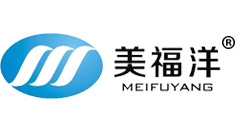Discussion on sewage and sludge treatment scheme
With the development of social economy and urbanization in our country, the scale of urban sewage treatment plant is expanding, and the processing degree is increasing. So far, the country has been built and in the construction of the urban sewage treatment plant has been nearly 300, the sewage treatment capacity of 10 million m3/d.
1 the concept of urban comprehensive sewage treatment
In recent years, with the continuous improvement of science and technology, sewage treatment process with great development, generally urban comprehensive sewage first after initial treatment or secondary biochemical treatment, the treated municipal wastewater is the main pollutant for nitrogen, phosphorus and other nutrient rich, then the sewage land treatment system in-depth treatment of it. Primary treatment is the removal of suspended solids in the wastewater, the method has the grid, precipitation, sand, oil separation, air flotation, etc.. Secondary treatment is greatly removal were colloidal and dissolved organic pollutants in sewage, current treatment methods commonly used for activated sludge method and their improved process for first and second grade can be mixed with, some has reached three hybrid processing, for a better removal of nitrogen and phosphorus in the sewage, and further development of the phosphorus removal technology of nitrogen removal. Its characteristic is the dominant species (mainly phosphorus accumulating bacteria) in anoxic - Anaerobic - aerobic treatment process (especially in the aerobic process) need to a lot of oxygen for growth principle, so as to reduce the content of nitrogen and phosphorus in the sewage, the sewage in the process to achieve the tertiary treatment.
2 classification of urban comprehensive sewage treatment
Because of a wide variety of sewage, the nature of different, so the sewage treatment strategy is also very different.
2.1 domestic sewage
Usually using urban sewage as an example of wastewater treatment, just after primary treatment and simple secondary processing can be reached using municipal reclaimed water quality requirements and can meet the requirements of water for industrial circulating cooling water and home to the toilet to use reclaimed water reuse. Membrane bioreactor (MBR) is refers to the membrane separation technology in ultra microfiltration technology and sewage treatment in the conventional activated sludge process (CAS) combination, with membrane components instead of activated sludge secondary sedimentation tank solid-liquid separation, to achieve the purpose of removal of suspended solids, bacteria and organic molecules. MBR has the advantages of good water quality, high volume load, small floor area, low production of excess sludge, convenient operation and management.
2.2 hospital sewage
Hospital sewage is a kind of waste water produced in the process of diagnosis, treatment and prevention of hospital or other medical institutions. Containing microbes and infectious diseases, such as AIDS, hepatitis B, hepatitis C, typhoid fever, dysentery, tuberculosis, etc. virus, is listed as national HW01., hazardous pollutants, such as not treated directly outside the row, bacteria will be through the water, soil and atmospheric propagation, pose a threat to the human body. After two treatment, the water quality has been improved, the bacterial content is also greatly reduced, but the absolute quantity of the bacteria is still considerable.
2.2.1 chlorine disinfection
Chlorine disinfection are commonly used in liquid chlorine and sodium hypochlorite method. Liquid chlorine is in the eighties of the 20th century the most popular method, technology is mature, cheap price, equipment failure rate and cost were significantly lower than those of ozone, but chlorine leakage phenomena occur from time to time, and easy to produce secondary pollutants: sodium hypochlorite method is applied during the 20th century, 90 in most of the way, less equipment investment, low operation cost, safe and reliable, easy management, for reliable drug source area in wastewater disinfection has been widely used. But the disinfection role than chlorine strong.
2.2.2 peroxide disinfection
Peroxide disinfectant is the most commonly used chlorine dioxide and ozone.
The different characteristics of chlorine dioxide and chlorine disinfection and its bactericidal mechanism is mainly chlorine dioxide molecules penetrate into the cells, nucleic acid (DNA or RNA) oxidation to inhibit rapid microbial protein synthesis to destroy microorganisms of survival. Chlorine dioxide is confirmed by the World Health Organization (who) a strong and efficient bactericide, is internationally recognized as the chlorine disinfection series the ideal replacement products, for the State Environmental Protection Administration recommended, its biggest advantage is humus or organic reactants with almost no divergence of organic halogen compounds, does not generate and suppresses the generation of carcinogens Trihalogenated methane, nor with ammonia and amine reaction.
Ozone disinfection, ozone is a strong oxidizing agent, sterilization effect is good, contact time is short, chlorine sterilization effect is gradually, and the ozone sterilization effect is fast, instantaneous. Also ozone not only don't produce carcinogenic trihalomethanes, but also effectively degrade and eliminate the sewage in the color, smell, taste, phenol and cyanide pollutants, deodorization good decolorizing effect, increase the water solubility, now western European countries generally make, but a large investment, equipment failure rate and high power consumption is high, cost is chlorinated high and due to the chemical properties of ozone is very unstable directly with the disadvantages of ozone disinfection, can not be stored, is not easy to transport, ozone disinfection of water can not maintain the residual ozone, difficult to control the growth of bacteria, control and detection of O3 are required to certain technical and difficult to manage.
2.2.3 ultraviolet irradiation disinfection
Ultraviolet irradiation disinfection with broad-spectrum sterilization, can effectively kill a variety of bacteria, bacteria and native bacteria, as a physical method of disinfection, non-toxic, accumulation toxicity and corrosion crops, simple operation, without chemicals and does not produce secondary pollution after disinfection of water without residual radiation. The disadvantage is that the short service life of the ultraviolet light source, Wakako Teru low intensity, sterilization efficiency is not high, and no subsequent role, can not be a large-scale application.
2.3 industrial waste water
Industrial sewage water due to contain a large number of metal ions, such as mercury, chromium, cadmium, etc., as well as alkali, sulfide and salts and other inorganic substances, showing a unique color, the pollution is very strong. If the industrial sewage directly into the aquatic ecosystem, not only can not reduce the concentration of heavy metals, but also enrich and enlarge its effect. According to the study showed that: heavy metals into the organisms, can accumulate in an organ caused by cumulative poisoning, and ultimately endanger life.
Organic waste water pollution in some of the deterioration of water quality, harm to aquatic organisms, harm agriculture; some people chronic poisoning, damage to the body's normal physiological processes, which heavy metals on the human body, and even carcinogenic. However industrial sewage inorganic composition vary. Therefore, the effective governance of industrial sewage measures and specific situation specific analysis, with appropriate water treatment technology and specific industry reducing sewage treatment equipment combination, in order to effectively reduce toxic elemental in industrial wastewater. The most effective method is the direct purification of the raw water in the factory, that is, directly in the industrial plant or near the use of targeted sewage treatment methods. Now, the direct purification technology of industrial sewage is the national energy conservation and emission reduction strategy is very vital in the forefront of technology.
3 sludge treatment
Commonly used sludge treatment methods are: agricultural use, sanitary landfill, incineration and put into the ocean, etc.. At present, the sludge treatment in our country is mainly based on agriculture and sanitary landfill.
3.1 sanitary landfill
Sanitary landfill advantages of investment, the implementation of fast, the method is simple, processing large scale. The disadvantage is that the sludge soil mechanics properties require a higher, need a large area of the site and a lot of transportation costs, the foundation for anti-seepage treatment to prevent groundwater pollution. Landfill the remains of sludge disposal in our country one of the most important methods, but in the long run, the conventional landfill is a cycle of final disposal, need a large area of land, the application ratio will be gradually reduced.
3.2 ocean dumping
Ocean dumping is a simple and economical treatment method. For those large scale sewage treatment plants that are close to the coast, it is a convenient way to dispose of the liquid sludge in the sea. In 90s, the United Kingdom, Japan, the United States have used this
Method for treatment of sludge, but cast into the sea will marine pollution, on marine ecosystems and human food chain pose a threat, in view of the above, sludge dumping at sea has been more and more opposition, not in the handling of sludge in water.
3.3 land use (sewage sludge)
China is a large agricultural country, both from the economic factors, or from the fertilizer use factor of, sludge land use is in line with the disposal method for the situation of our country. Sewage sludge is the most feasible and practical solution in the specific situation of our country. Sewage sludge can be a large number of sludge disposal, in principle only sludge reached the relevant standards of the state can be used for farmland; sludge in farmland natural material recycling process, sludge in the nitrogen, phosphorus, potassium, organic matter and trace elements is good agricultural fertilizer, on crops yield by; sludge organic matter and humic acid can improve the soil structure, good soil improver; make the production cost could be reduced through the use of sewage sludge in agriculture, suitable for China's current economic development situation.
3.4 sewage sludge compost
Sludge composting is an important aspect of agriculture, it is the use of microorganisms in the sludge fermentation process. As early as the beginning of the twentieth Century, the development of research in Europe was successful and began to be used only for the treatment of urban waste.
3.5. sludge incineration
Sludge incineration, greatly reduced. In addition, the heavy metals contained in the sludge at high temperature is oxidized into a stable oxide, is the manufacture of ceramic, ceramic tiles and other products of excellent materials. In recent years, incineration has been greatly developed, and various other compared, incineration method has following prominent advantages:? Greatly reduce the size and weight of the sludge, and ultimately need to deal with the matter is very small, sometimes incineration ash can be made into useful products;? Sludge processing speed, without long-term storage;? Sludge can be in situ burning, without long distance transport; 4. Energy recovery for power generation and heating.
4 concluding remarks
Optimization of 4.1 to sewage treatment, not simply from a macro point of view of water were simple control, on the basis of mutual transformation of sewage treatment to understand the inner mechanism of, taking into account the factors of water quality and water treatment, only the combination of these two aspects, such as sewage treatment was more objective and accurate.
4.2 as the sewage treatment process with biological sludge is also increasing, the disposal of sludge in urban sewage treatment in the position will become increasingly prominent. In view of this problem, the solution methods of different countries are not the same, there are differences in different regions of the same country, local conditions should be the basic ideas and principles of the choice of sludge treatment and disposal methods.
4.3 in sewage sludge treatment, to fully control, reasonable layout; to strengthen the publicity and education of environmental protection consciousness; strengthen the management and try to get rid of now economic development in high pollution and high emissions "double high" dilemma.
Discussion on sewage and sludge treatment scheme 本文被阅读 1251 次




